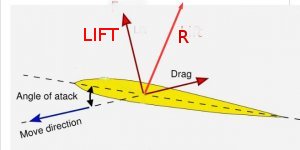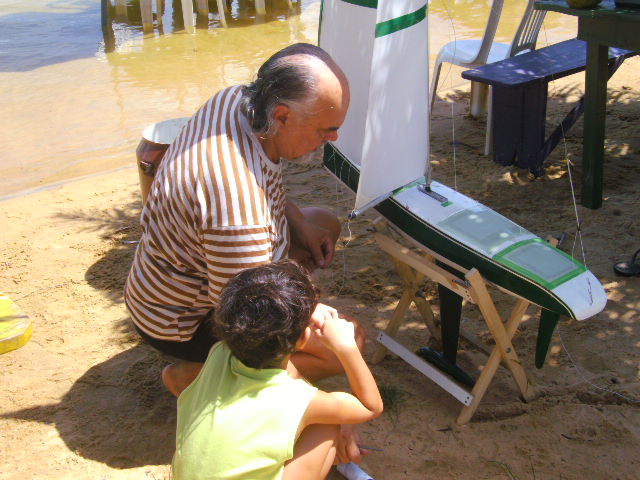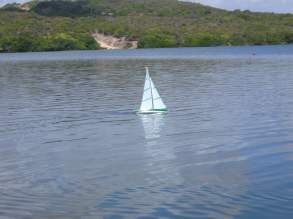THIS PAGE IS UNDER CONSTRUCTION !
YOU ARE INVITED TO BUILD IT WITH ME! Make your contribution. Send your knowing! In the comments or by e-mail.
———————————————————————————
All want learn about design a hydrofoil boat need read a thread in boatdesign.net Forum do by DOUG LORD : http://www.boatdesign.net/forums/hydrodynamics-aerodynamics/sailing-foiler-design-foil-assist-full-flying-40894.html
——————————————————————————————————–
HYDROFOILS
In this page we will talk about the science of hydrofoils.
– APPLICATIONS
Today we have much hydrofoils applications, see:
http://www.youtube.com/watch?v=j_WKgcOiq2M
And in our segment:

Doug Lord F3
– BENEFIT
The goal is making the hull of the water. With this we subtract a large part of the frictional and residual resistance and the boat can reach speeds much faster than traditional boats.
-TECHNICAL PECULIARITIES
Today, we mainly use two types of hydrofoils:
surface piercer: is a inclined wing in water
The surface piercer is a wing inclined from the horizontal, so, as the boat increases speed and goes out of the water the same occur with the surface piercer and with it the lift decreases until reaching a point where the surface of the immersed surface piercer is sufficient only to maintain the hull above the water, hence it is said that the surface piercer has a self control of lift generation.
The lift generated is due the differents pressures in the faces of the hydrofoil caused by the foil angle of attack.


However this difference in pressure can cause air intake on the surface of hydrofoil on the side of low pressure near the water surface diminishing the hydrofoil ability in producing lift. For this reason we put fins on the surface of hydrofoil as an attempt to stop the entry of air.
fully submerged foils: is a horizontal wing submersed in water
This feature takes this kind of hidrofoil go up until the hidrofoil leaves the water, it is not self-adjustable. To prevent the exit of the water we use flaps to reduce the lift generation .
The problem then, with this type of hidrofoil, is that we must have a mechanism to move the flap properly. The simplest mechanism is used, for example in the Moth forward hidrofoil, is a bar out on the edge of the hull having a float, as the hull rises, the angle of the bar is changing and this angular motion is taken to the mechanism that moves the flap. As the hull rises, the mechanism change the angle of the flap and the efficiency of hidrofoil generate the lift goes down.
In the above video you can clearly see the bar in action on the bow of the Moth.
But we have others mechanisms to move the flap, for example:
RC HYDROFOILS
Well, and for our RC sailing boats what we can do and what are the problems?
See the video above: Hidroptére RC a Casteljaloux 47.
What I see?
If the wind increases, the windward hull starts to leave out of water, either by the lift generated by hidrofoil as the moment of the wind in the sail. When the hidrofoil leaves the water, totally, all the weight of the boat is divided between the rudder hidrofoil and the leeward hidrofoil.
My first observation would be that the weight supported by surface piercer hidrofoils must be more than a single statical weight division between the three hidrofoils, must be in minimum the total weight divided by the rudder hidrofoil and one single surface piercer, according theirs relative positions with hull CoG. But here we have also the dynamical aspects that we must see. The boat is moving, in waves, with velocity, how much we need increase the areas in these hidrofoils to taking into account these parameters?
Let’s see my HidroPET weights:
| Weight | Longitudinal CG | col D X col F | ||
| g | m | gm | ||
| Longitudinal structure | 81,0000 | 0,5750 | 46,5750 | |
| Transversal structure | 80,0000 | 0,7900 | 63,2000 | |
| Lateral Foil platform (2) | 40,0000 | 0,7900 | 31,6000 | |
| Rudder Platform | 20,0000 | 0,0400 | 0,8000 | |
| Bow PET | 40,0000 | 1,1500 | 46,0000 | |
| Stern PET | 40,0000 | 0,1500 | 6,0000 | |
| Port/Stb PET | 80,0000 | 0,7900 | 63,2000 | |
| 0,0000 | 0,0000 | |||
| Hydrofoil (2) | 100,0000 | 0,7900 | 79,0000 | |
| Rudder | 80,0000 | 0,0000 | 0,0000 | |
| Battery | 200,0000 | 0,1000 | 20,0000 | |
| Rudder servo | 40,0000 | 0,0400 | 1,6000 | |
| Sail servo | 70,0000 | 0,0900 | 6,3000 | |
| Mast and sail | 350,0000 | 0,7900 | 276,5000 | |
| 0,0000 | ||||
| 0,0000 | ||||
| Total weight g | 1221,0000 | 640,7750 | ||
| CG Longitudinal m |
0,5248 |
Let see a statical and horizontal situation for weight distribution on hidrofoils:
Fr – Force on the rudder hidrofoil; W = total weight; Fsp = Force in the two surface piercer
Fr x 0 + W x 0.5248 – Fsp x 0.79 = 0
Fsp = 0,811 kg (Each surface piercer need develop a minimum of 0.4055 kg)
Fr = 1.221 – 0.811 = 0.409 kg
But for me we can add 3 times 0.811 kg for each surface piercer. Why 3 times? Intuition, 3 times in minimum.
This value was idealized when I was seeing the video and in the worst situation, (windward hull out of the water, boat with velocity) the hull not leave the water. There was a deficit in the area in hidrofoil. And about this we have other problem, the righting moment.
When the boat is out of the water we have a up vertical force in the rudder submerged hydrofoil , another in the port side surface piercer , another on the starboard surface piercer – they are vertical forces up to balance the weight force, vertical down.
When a piercer leaves the surface out of the water driven by the moment introduced by the wind in the sail, we have the vertical force of the leeward surface piercer and the rudder submerged hydrofoil balancing the weight of the boat. These forces provide a restorative moment, which opposes the moment created by the wind = Weight x d, where d is the horizontal distance of weight, applied at the center of gravity of the boat, to the vertical plane passing by a line joining the point of application of forces in hidrofoils.
As the slope increase d decrease diminishing the restorative moment. If the efficiency of the sail does not decrease more, for sure, the boat will capsize.
Then the trimaran hydrofoil equilibrium has to be very well studied and that leads, inevitably, to the movable ballast as warns our friend Doug Lord.
Doug Lord also gave us valuable information:
a -the beam at least 1.36 X’s length-like Hydroptere
b – foil loading on the F3 (hidrofoil boat made by Doug – several years ago – see fig above) was about .176 lb per square inch(at takeoff) and much more as the RM was developed
c – the foil section doesn’t really matter that much-just keep it at about 9% t/c max
d – on the F3 the main foils were set at +2.5 degrees angle of incidence relative to the static waterline-with the rudder foil at zero degrees
Using the load .176 lb per square inch lets see what area we need for the surface piercer:
0.176 lb/in² = 0.012374 kg/cm²
Condition – one surface piercer out of water:
a) Without margin to dynamic forces
Area = 0.811 kg / 0.012374 kg/cm² =65.54 cm²
b) With a dynamic coefficient = 2 for dynamic forces:
Area = 2 x 0.811 kg / 0.012374 kg/cm² = 131.08 cm²
c) With a dynamic coefficient = 3 for dynamic forces:
Area = 3 x 0.811 kg / 0.012374 kg/cm² = 196.62 cm²
If I use a surface piercer with dimensions; length = 35 cm and width = 6 cm; we have a area = 210 cm² and aspect ratio = 5.83 and we are attending this last supposition.
I will use a t/c = 6%.
CONTINUE….















Hi, I have a question. How did you done hing in flap? What is this material? It is kevlar?
Hello – these are Mini40 foiling in Australia. C rigs for most of the time though we did try B rigs for a while. Really good comparison of the conventional fixed V foil configuration versus the wand controlled T foil with flap. The latter is more docile and . . slow! The fixed v foil needs concentration upwind and exactly the right amount of lift, but can be fine. I think we need sets of foils of different lengths, as you can see that we have more than enough lift from the V foils. Number 59 especially demonstrates this by rearing its bows when heeled upwind.
The wand controlled foils may one day work but there is still so much to test, and I am not sure that I have the patience for the trial and error here – too many variables to sort out: size of fixed element of the foil; size of flap; angle of fixed element; depth of foil; wand length; gearing between wand and lever on top of foil, etc. This is my second set of T foils and, whilst better, and noticeably more docile upwind are still nowhere near as fast as the v foils.
We are still finding the Firedragons to be excellent all-round boats, they keep you upright when slimmer designs would go under
Video is here:
I feel that is one of the such a lot significant info for me.
And i’m happy studying your article. But want to commentary on some common issues, The web site taste is wonderful, the articles is really great :
D. Good process, cheers
Thanks.
Some details about my foiler. It seems that others RC foil boat I saw needs strong wind and strong wing is often irregular so not easy to drive. Therefore I try to make mine very very light to be able to fly (not so fast) in light wind and more fast in medium. The structure is like a vintage airplane model : only balsa wood board varnished and no fiber glass. Global weight in navigation is 1,1 Kg.
The floats are free in rotation around the main traverse. They don’t make torsion effect and stay naturaly in good angle in the water. It’s necessary to put the mast and main traverse neer the front.
Sise of the foils : 8 x 25 cm – plan/convex profile – wood and époxy fiberglass
Sise of the rudder : 7 x 17 cm (vertical) and 5 x 14 (horizontal foil)
I liked design and build this challenge and i like now when children are soo surprised when the boat fly !
Hi Jean-Marie,
thank you for the information, I think it will be very important for those who want to develop hydrofoils radio controlled.
Keep this blog for what you need.
Cheers,
Fred
Congratumation. I build a RC foiler in France. a mix of Hydroptère and windsurf, in France. I am disappointed not to talk well in english because it seems to me that there a lot of very interresting informations.
[url]http://www.youtube.com/watch?v=pTRzckkVRhg[/url]
Great Jean-Marie, is beautiful.
Can give some more informations about the foil area and foil? Can be in French.
Au revoir,
Fred
I make Hydrofoils, videos and photos in my Web.
Very nice your blog. Congratulations for you work. I will link it in my Brazilian blog:
http://www.frediom.wordpress.com
Cheers
Fred